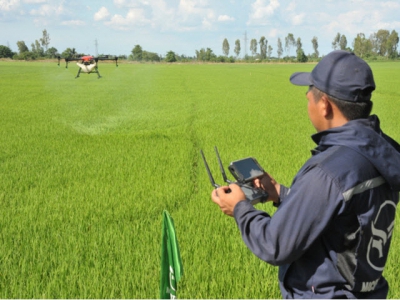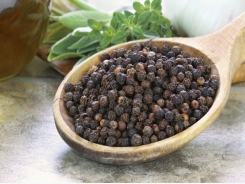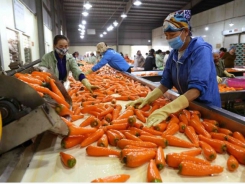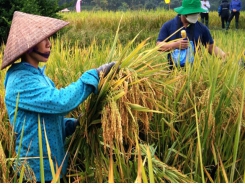Stay ready for a responsible agriculture

The plant protection industry is prepared with action plans to foster the establishment of a high-valued, 'green' and sustainable agriculture, among other topics.
The application of smart technology is being promoted by the PPD to support traditional plant protection work. Photo: LHV.
On the occasion of the 60th anniversary of the establishment of the Plant Protection Department (October 5, 1961 – October 6, 2021), Mr. Hoang Trung – Director of the Plant Protection Department (PPD) shared the sector's direction during a period when the entire agriculture industry is transforming into a high-value, sustainable, and globally integrated one.
Enhance the legal framework and organ allocation system
PPD's 60-year history has been marked by ups and downs, as well as a range of emotions. Regardless of the unit's changing roles and responsibilities in response to changing circumstances, the unit has always performed well on the five primary allocated tasks.
The madates cover plant protection and pest prevention; plant quarantine for import and export; ensuring the safety of domestic production and the reputation of Vietnamese agricultural products and products on the international market; actively participating in market opening negotiations with major agricultural groups; and managing agricultural inputs, particularly pesticides and fertilizers.
The Department has made significant efforts and achieved some significant achievements, including a fully functional legal system from the central to the local level.
The Department is unique in its type, possessing the Ministry of Agriculture and Rural Development's most comprehensive legal corridor, including everything from the Law and Decree to standards and regulations... It now monitors and issues over 1,000 Vietnamese technical standards, which serve as the foundation for the quality management of agricultural inputs used in agriculture.
Additionally, the Department arranges reasonably synchronous centipedes throughout the neighborhood. As of 2006, the unit has created four regional headquarters, 63 province-level departments, and over 750 district-level of plant protection stations. This is a comprehensive system that will assist the Department in predicting and prevention, except for species that cause agricultural damage.
The PPD sector has been effective in ensuring the major production crops owing to this synchronized system. The breakouts were successfully contained and soon extinguished. According to the evaluation, PPD's effort accounts for 50% of the agricultural production sector's success.
Maintain control over the quality of agricultural materials
PPD has examined over 73 million tons of import and export products, with over 500,000 shipments, in the past five years, fully addressing infractions. Simultaneously, the unit aggressively pursued and developed export possibilities to other markets. Vietnam's premium fruits and agricultural goods have now penetrated the majority of challenging markets, as well as neighboring nations.
To facilitate the use of traceable goods and to ensure food hygiene and safety, the Department offers direct information to importing nations on the code of planting areas and packaging facilities that comply with the attp.
The Department is also responsible for the inspection and regulation of pesticides and fertilizers. It has progressively reduced the list of pesticides over time by removing active chemicals that are hazardous to human health and the environment, encouraging the use of biodegradable pesticides, and gradually reducing pesticide imports. Currently, the nation has imported more than 40,000 tons of pesticides since January 2021, a significant decrease from the previous 100,000 tons.
The Department has finalized legal papers, decrees, and technical rules pertaining to fertilizer. Until recently, the Department has exercised tight supervision over this item's manufacture, import, and export... Along with the manufacturing organization, the Department examines, inspects, and controls imported and exported goods in accordance with the chain of custody.
For exports, the Department issued legal papers requiring businesses to carefully comply with the usage of active ingredients. When it comes to imports, the unit argues for stringent control beginning with the registration procedure and continuing through the testing and sampling process.
Currently, PPD is a MARD's agency tasked with aggressively shortening processes and facilitating businesses. While the unit handles about 1,600 administrative processes each day throughout the country, it has increased its use of information technology and digital transformation in collaboration with the General Department of Customs (Ministry of Finance) to expeditiously clear customs in cyberspace. As a result, process and procedure stagnation is rare.
Advancing ecological agriculture
Regarding plant protection, PPD will concentrate on implementing scientific advancements such as: implementing the IPHM program, assisting in cost reduction, and reintroducing environmental and ecological stewardship to the fields. Additionally, maintain programs such as "3 decline 3 rise," "1 must 5 decrease," and organic agricultural models, as well as biological controls such as bait traps, enemy defense, and so on.
It will test biological measures for environmental protection in the coming years, complete the project, and establish four regional centers to select biological agents to prevent biological pests in each region, moving toward responsible agriculture, environmental friendliness, and increased surplus value, as well as a focus on technology 4.0. The PPD is now testing spraying equipment, such as drones, using a rigorous procedure to ensure efficiency, safety, and a low impact on people and the environment.
Additionally, the Department completes the planning and forecasting equipment necessary to study and evaluate the environment and climate in each area; is now being tested in certain provinces through a mobile application that assists individuals in identifying hazardous animals in the field.
The goal of fertilizer management is to create and promote the usage of organic fertilizers in both directions. The PPD recommends for increasing output from 2.6 million to 5 million tons per year using industrial organic fertilizers.
Simultaneously, the unit will assist farmers in using by-products to create organic fertilizers for use in the fields, thus helping to the replacement and reduction of benign fertilizers.
With regard to pesticides, the Department encourages businesses to create biodevelopment medicines in addition to continuing to evaluate and progressively phase out harmful pesticides.
Increase export markets
PPD will concentrate its efforts in the next months on verifying and evaluating the planting area code for critical agricultural crops servicing both local and international markets. The Department will enhance market openness on the basis of ongoing discussions in order to facilitate exports and decrease storage costs.
The Department will change the way inspections are conducted in the plant quarantine. The Department will analyze and provide written instructions to units and businesses to ensure the submission procedure is as accurate as possible based on the amount of samples. This is the foundation upon which time savings in warehousing are based.
Related news
Tools

Phối trộn thức ăn chăn nuôi

Pha dung dịch thủy canh

Định mức cho tôm ăn

Phối trộn phân bón NPK

Xác định tỷ lệ tôm sống

Chuyển đổi đơn vị phân bón

Xác định công suất sục khí

Chuyển đổi đơn vị tôm

Tính diện tích nhà kính

Tính thể tích ao




 Vietnam seeks more robust coffee exports to Nordic…
Vietnam seeks more robust coffee exports to Nordic…  2021-2022 winter-spring rice crop: Planting area increased in…
2021-2022 winter-spring rice crop: Planting area increased in…